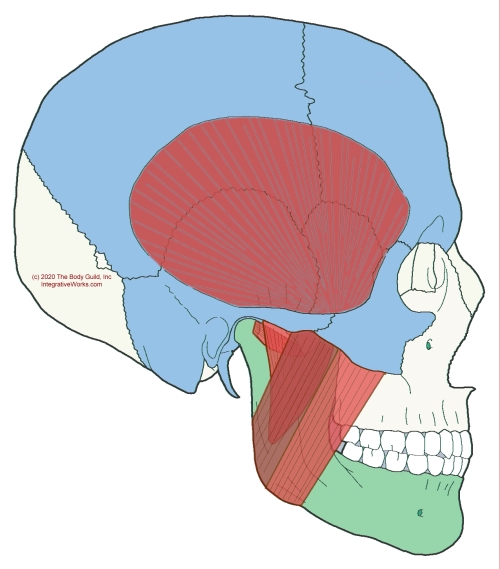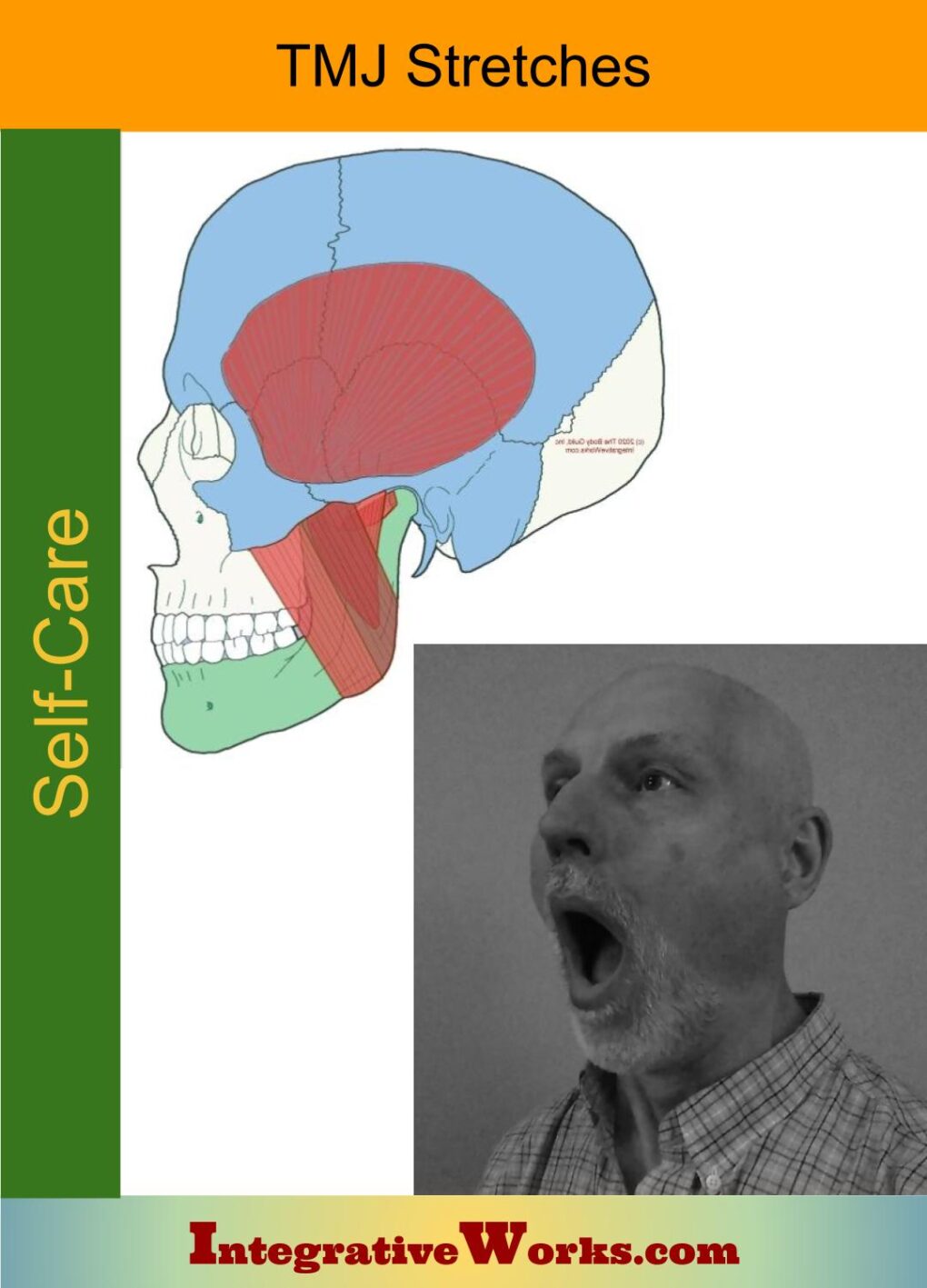Here, you will find a safe, basic routine for balancing the musculature that supports the Temporomandibular Joint (TMJ). It provides relief from mild TMJ dysfunction, especially when used daily.

The temporomandibular joint could be to be the most complex joint in the body. It has to accommodate a combination of hinging, gliding, and rotary motions. These stretches help with all those motions.
Guidelines
This series stretches some of the basic motions of the TMJ. Additionally, when done with measured speed and tension, it balances the mechanism. So, use the ice-and-stretch method. It can offer immediate relief for many TMJ imbalances.
First, with each stretch, lengthen to the point of slight tension and hold it for about 2 seconds. Also, four reps work well for each muscle if you do ice-and-stretch. Otherwise, do 10-12 gentle stretches if you are not using ice-and-stretch.
Start With Icing
When using ice-and-stretch, apply ice along all of the areas of muscle shown in this illustration before starting the first stretch. It will make this process more comfortable, faster, and more effective. Topical creams like IcyHot tend to irritate your eyes.

Open Wide
This stretches the temporalis, masseter, and medial pterygoids.
- If you get a single click on the first opening, it will often resolve when this routine is used once or twice a day.
- If you get repeated clicking, stop. Instead, you should see your TMJ specialist for an evaluation.
Avoid this if you have problems with your jaw locking in the open position. Again, see a TMJ specialist for evaluation.

Shift Right
You should feel the tension on the right as it stretches the lateral pterygoid. If you want extra stretching, focus on more repetitions, not more force. This approach will make the stretching easier and more effective.

Shift Left
You should feel the tension on the left as it stretches the lateral pterygoid. If you want extra stretching, focus on more repetitions, not more force. This approach will make the stretching easier and more effective.

Underbite
This stretches the digastricus and the retrodiscal tissue. Be gentle, as this can feel sharp in the joint when you are too aggressive.
Avoid this if you get open locks, Instead, see your TMJ practitioner for an evaluation.

Overbite
This stretch focuses on the lateral pterygoid. Also, it stretches the deep masseter.

Check Your Progress
This should be easier and open wider with less pain and tension.
I’d love your feedback on how this works for you and any suggestions you might have.
Email me at integrativeworks@gmail.com.
Support Integrative Works to
stay independent
and produce great content.
You can subscribe to our community on Patreon. You will get links to free content and access to exclusive content not seen on this site. In addition, we will be posting anatomy illustrations, treatment notes, and sections from our manuals not found on this site. Thank you so much for being so supportive.
Cranio Cradle Cup
This mug has classic, colorful illustrations of the craniosacral system and vault hold #3. It makes a great gift and conversation piece.
Tony Preston has a practice in Atlanta, Georgia, where he sees clients. He has written materials and instructed classes since the mid-90s. This includes anatomy, trigger points, cranial, and neuromuscular.
Question? Comment? Typo?
integrativeworks@gmail.com
Interested in a session with Tony?
Call 404-226-1363
Follow us on Instagram

*This site is undergoing significant changes. We are reformatting and expanding the posts to make them easier to read. The result will also be more accessible and include more patterns with better self-care. Meanwhile, there may be formatting, content presentation, and readability inconsistencies. Until we get older posts updated, please excuse our mess.


